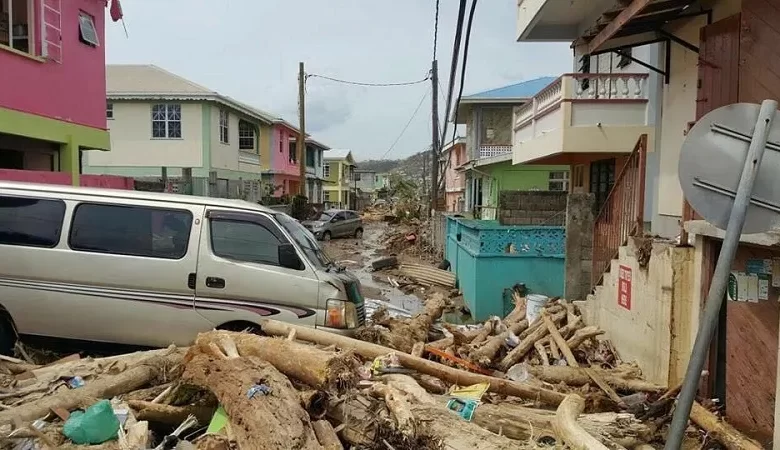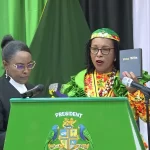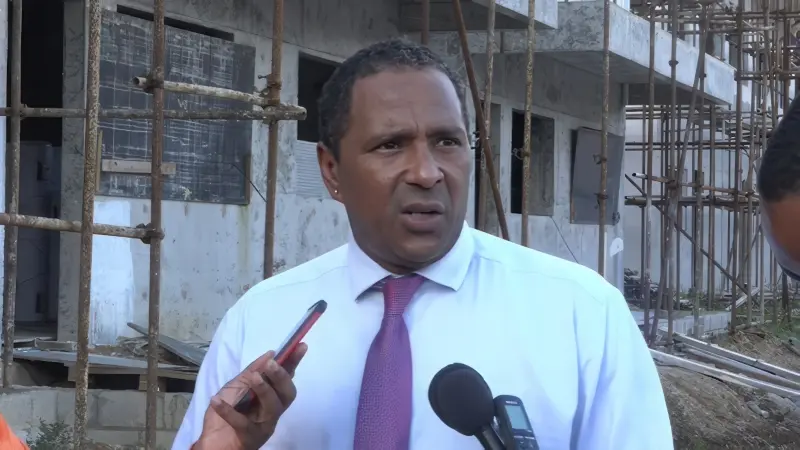Hurricane Maria, Dominica

Hurricane Maria on Dominica was a catastrophic Category 5 hurricane that struck the island on September 18, 2017, causing unparalleled devastation. The entire nation, from the Roseau Valley to the remote villages within the Carib/Kalinago Territory, was significantly impacted by this unprecedented event. The hurricane destroyed housing and infrastructure, leaving a permanent mark on the island’s landscape and its people.
Hurricane Maria’s Damage to Dominica
Maria’s intensity destroyed the Dominica Botanic Gardens, symbolising the island’s natural beauty. It severely damaged the Cabrits National Park, highlighting the vulnerability of Dominica’s environmental conservation areas. The storm’s ferocity did not spare the Morne Trois Pitons National Park, affecting both the flora and fauna unique to the region.
The first aerial assessments revealed widespread devastation across Dominica. The island’s landscapes, particularly along the coast, were severely impacted, with many homes becoming uninhabitable due to floods and landslides. This damage extended to the nation’s infrastructure, affecting roads and public buildings, including schools, stores, and places of worship, and impacting every resident of Dominica’s 60,000+ population.
The hurricane caused significant damage to the aviation facilities at Douglas-Charles Airport (DOM) and Canefield Airport (DCF), particularly the air control towers and terminal buildings. Despite this, the runways were spared, allowing for emergency operations. The health sector was not spared, with all 53 health facilities on the island suffering damage, including the Dominica-China Friendship Hospital, which raised concerns about patient safety.
In Roseau, the destruction was particularly evident, with most of the Dominica Electricity Services Ltd. (DOMLEC) power poles and lines downed, rendering the main roads impassable and flooded. The Roseau Public Library lost its roof, and a Baptist church was almost destroyed. South of Roseau, Pointe Michel experienced devastating flooding and landslides, resulting in significant loss of life and the destruction of approximately 80% of its structures.
The destruction was not confined to the capital. Rural areas and the east coast faced isolation due to collapsed infrastructure, hindering access to many villages. Marigot, in Saint Andrew Parish, and several settlements in Saint David Parish, including Castle Bruce, Good Hope, and Grand Fond, were among the hardest hit, with homes severely damaged or lost to the natural forces. In Rosalie, floodwaters damaged the bay area and infrastructure, while Saint Patrick Parish saw extensive damage to buildings and vegetation, particularly in Grand Bay. La Plaine‘s landscape was dramatically altered, with homes lost to the rivers and its bridge destroyed.
Dominica’s Resilience after Hurricane Maria
In the aftermath, the resilience of the Dominican people shone through. The Government, led by the Prime Minister of Dominica, Hon. Roosevelt Skerrit, alongside his Dominica Labour Party (DLP) and other Political Parties in Dominica, rallied to initiate recovery efforts. International aid played a crucial role in the immediate relief efforts, with nations worldwide offering support to rebuild the devastated island.
Reconstruction efforts have focused on rebuilding a stronger, more resilient Dominica. Initiatives such as the Climate Resilience Execution Agency for Dominica (CREAD) aim to fortify the island’s infrastructure, ensuring that homes, roads, and public buildings can withstand future hurricanes. The emphasis on disaster preparedness and conservation has become central to Dominica’s path towards recovery and sustainability.
Dominica’s journey post-Hurricane Maria is a testament to the island’s strength and determination to rebuild. The spirit of unity and perseverance has been a beacon of hope for Dominicans, embodying the resilience required to face future challenges in an era of climate uncertainty.




